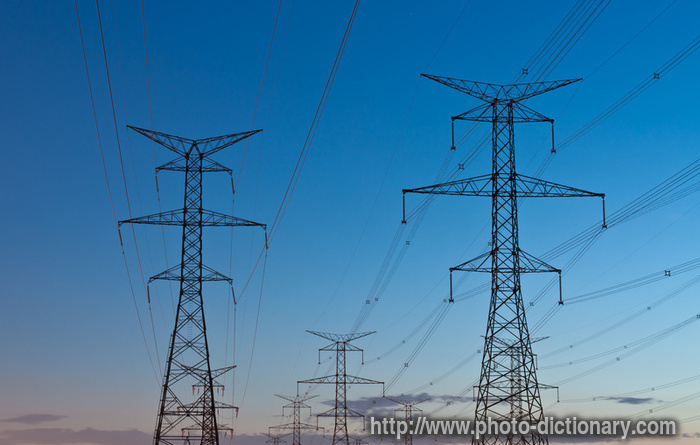Simply turning on and turning off switches...!!!
Firstly, we need to start with a source in order to generate electricity.
So, what are the different kinds of sources we have from the mother earth?
Most of these sources are finite or the equipment to install is costly and of course few are not economical. That is why these many fights between the states for electricity. (shortage)
Every day researches are going on to find out new technologies to generate electricity.
Let us take one example of such source and see what happens inside the generating station.
Generation:
1. A mechanical/chemical process is required to convert this source (say coal) into electrical energy.

Sub-Stations:

Distribution:


Ohh....,Felt difficult to understand the technical terminology... Here go with a simple non-technical language: (I tried my best)
We have three stages:
1.Generation
2.Transmission
3.Distribution
Firstly, we need to start with a source in order to generate electricity.
So, what are the different kinds of sources we have from the mother earth?
Coal, Natural gas, Solar, Hydro, Winds, Biomass, Nuclear, Geothermal, Oil, Municipal Solid waste etc.,
Most of these sources are finite or the equipment to install is costly and of course few are not economical. That is why these many fights between the states for electricity. (shortage)
Every day researches are going on to find out new technologies to generate electricity.
Let us take one example of such source and see what happens inside the generating station.
Generation:
1. A mechanical/chemical process is required to convert this source (say coal) into electrical energy.
2. Electricity is generated, by the turning of turbines (3rd block in the above fig). In most power plants, these turbines are turned by pressurized
steam.
3. The steam is created by the burning of coal (1st block in the above fig) or other fossil
fuels in massive boilers (2nd block in the above fig). In the case of hydroelectricity, the force
of rushing water turns the turbines.
4. This turns the rotor inside the turbine. The other end of the rotor inside the turbine is connected to the shaft which spins the magnets with a coil inside the generator.
5. It is the generator (4th block in the above fig) which converts mechanical energy into electrical energy and produces electricity. (Water is used back and forth to recycle.)
6.Once the turbines generate the electricity, its voltage is significantly increased by passing it through step-up transformers.
6.Once the turbines generate the electricity, its voltage is significantly increased by passing it through step-up transformers.
Transmission:

Then the electricity is routed onto a network of high-voltage
transmission lines capable of efficiently transporting electricity
over long distances from the grids where the electricity is generated by different sources.
Sub-Stations:
Oops.., you still find sub-stations on the roads beside your houses?

Yeah, too less/too much electricity will crash your home. So..., that huge amount of electricity which is in Mega/Kilo Volts should be reduced to a uniform voltage of 220 Volts using a step down transformer at sub-stations and of course with a huge transformer at the end of your street.

Done...!!!




Checha..... You are an Electrical Engineer So, you know about it why you Expecting to all people about the same concept ?
ReplyDelete